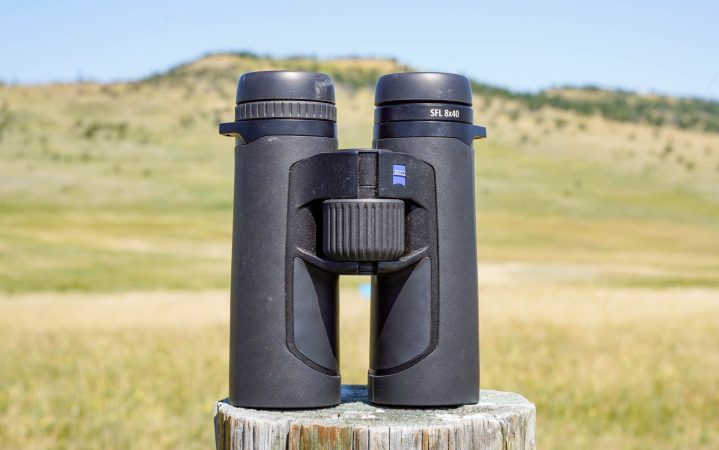How to Catch Shad, a Beginner’s Guide
We may earn revenue from the products available on this page and participate in affiliate programs. Learn More ›
From Northern Florida to Maine, American and hickory shad leave the ocean and pile into coastal rivers every spring to spawn. I’d argue that every East Coast angler should learn how to catch shad.
In most parts of the country shad are just a junk fish, worthy of nothing more than being cut up for catfish bait. However, along the Eastern Seaboard they are a cultural phenomenon. For generations, anglers have been lining Eastern rivers to do battle with shad. The fun usually starts when the water temperature nears 50 degrees, and by June 1, it’s usually all over.
There are two primary ways to catch shad—casting cross-current from shore or backtrolling from a boat. Shore anglers lean on shad darts, tiny grubs on jigheads, and light shad spoons rigged behind a small casting weight. All you have to do is cast slightly up current and reel steadily, allowing your lure to sweep in an arc across a likely run during the retrieve. Boat anglers anchor up and deploy multiple rods dangling flutter spoons behind the boat. To get them to hold at their desired depth, they’ll rig their spoons behind a small diving planer or behind a diving crankbait with the hooks removed. In terms of methodology, shad fishing isn’t overly complicated. The tricky part is knowing where to go, what conditions are best, and how to keep one of these migratory rippers on the line. If you’re interested in getting in on this fleeting action, here are some critical pointers.
Let the Shad Come to You
When it comes to learning how to catch shad, there is no more important rule than this: Success is based on being in a position where the shad come to you. With species like trout and bass, we catch more when we move around and cover a lot of water. We hit one juicy hole, then walk, drift, paddle, or motor to the next likely hiding spot. Those species, however, are predators. They roam around looking for a meal or sit in ambush and wait for food to come to them. Shad do neither.
When shad leave saltwater and enter a freshwater river, they stop feeding, period. In saltwater, hickory shad are more aggressive and will attack schools of baitfish, but American shad are full-time filter feeders, meaning they swim with their mouths open and collect plankton. Once these fish enter freshwater, however, they are on a mission to spawn. They have a one-track mind and are so focused on reaching their breeding grounds, that they don’t take time to feed.
What they will do, however, is smack a shad dart, grub, or flutter spoon out of annoyance. In order to annoy them, that lure has got to be right in their faces. As they advance upriver, your offering must be directly in their path and practically collide with their noses. They react as you or I would if we were jogging, and a bee began buzzing in our face. We’d swat at it with our hands. Since shad don’t have hands, they swat with their mouths. Given that a hit has nothing to do with hunger, they won’t stray from the path even a few feet to hit your dart or spoon, and I’ve had countless shad days where I’m tying in consistently while a boat just 30 feet to my left or right can’t score a strike.
Shad tend to follow underwater highways that present the path of least resistance. Whether fishing from a boat or shore, you win by keeping your offering in that path, then hoping you’re there on a day when wave after wave of fish is moving through. Any structure that constricts a river or funnels fish—such as choke points and bridge pilings—are popular spots. However, soft seams on the edge of fast current, eddies where fish can rest for a bit, and deep channels within shallow stretches can all be part of the shad superhighway.
Fish in Low Light
Shad are very sensitive to light. As they advance upriver, they tend to hug the bottom where it’s darker. If a river is too clear and the sun is shining, it can make for a very slow day. Fish may spend more time resting than advancing, or they might pay little to no attention to your darts and flutter spoons. This is why shad fishing will often be fire at dusk and dawn; it’s the sudden loss of light that can prompt hundreds of fish to forge ahead, and if you’re in the right spot, it’s magical.
But cloudy, dreary, rainy days are some of the best for all-day success. If the light is low all day, the fish will advance more readily. They’ll also be more willing to swim higher in the water column, making it more likely they’ll encounter your spoons, jigs, and darts. Oftentimes, when it’s clear and bright, the shad will hug the bottom so tightly that they swim right under your lures and, once again, if they’re not literally bumping into them, they’re not going to bite.
Lean on Light Tackle
A shad’s mouth is paper-thin and because of this, darts and flutter spoons are often made with light-wire hooks. A thin-gage hook won’t wear a large hole in shad’s mouth as quickly as a heavy-gage hook, and if the hole gets too big, one jump or head shake, and the hook can fall right out. But light-wire hooks are only part of the equation for landing shad. The right rod and line help, too.
While not popular in most fisheries, soft-action rods are great for shad. Like steelhead, shad are notorious for making fast direction changes mid-fight and turning their bodies broadside to make it harder to pull them in against the current. A rod with a soft, slow action does a better job of absorbing the jolts and strain. Six- or 8-pound test monofilament is ideal for shad, as it’s forgiving stretch also helps keep them on the line. If you prefer braided line, add a long monofilament leader to act as a buffer between the fish and the stretch-free braid. Just make sure your drag is set on the looser side so the fish can run when you connect. A drag that’s too tight will pull the hook right out.
Worry About Depth More Than Color
How much dart, grub, and spoon color matters in shad fishing is up for debate. It’s not uncommon to be fishing in a crowd, but you’ll see that only a handful of anglers are routinely connecting. And inevitably, someone will ask what color they’re using. Sure, color can make a difference depending on the water clarity and sky, but more often the reason a few anglers seem to have a hotter hand than the others is because they’re casting in a lane that’s being traveled by more shad, or their lures are getting to the proper depth more consistently.
If you’re shad fishing and the action is slow, alter your weight before your lure color. If you’re fishing a flutter spoon behind a casting weight, switch to a weight that’s a quarter-ounce heavier. If you’re casting darts, try a bigger one. If you’re backtrolling from a boat, switch to diving plugs that run a few feet deeper. Quite often, dialing in depth is the key to getting tight more frequently.
Read Next: Fishing the Epic (and Underrated) Shad Run on the Delaware River
Final Thoughts on How to Catch Shad
Whether you decide to target shad from the bank or from a boat, you’ll get hooked on the action when the fish are in heavy. Plus, there are a variety of ways to cook shad after you’ve had a good day on the water.
The post How to Catch Shad, a Beginner’s Guide appeared first on Outdoor Life.
Source: https://www.outdoorlife.com/fishing/how-to-catch-shad/



